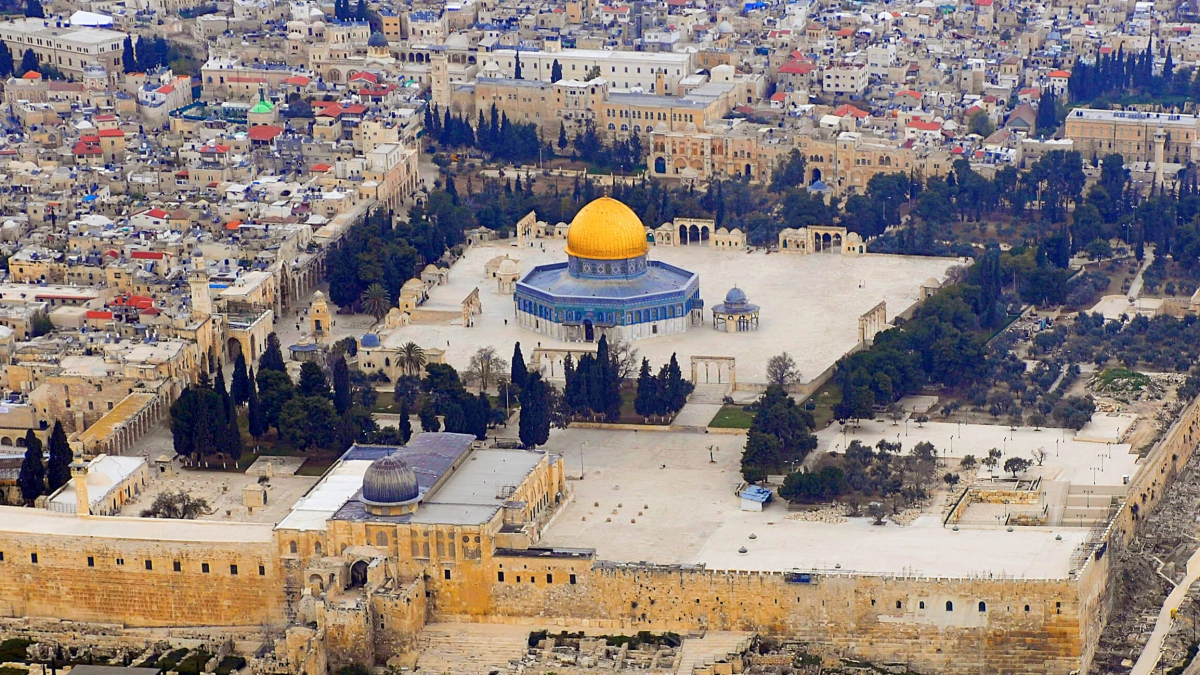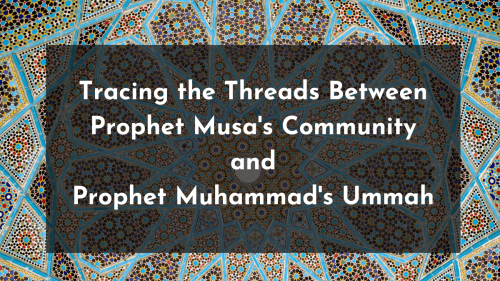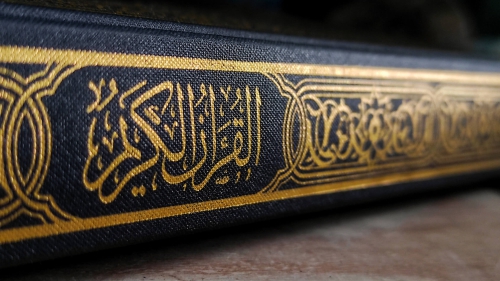Comparing Jewish and Islamic Perspectives on Abraham and Ishmael

In Genesis 25, after Sarah’s death (Genesis 23) and Isaac’s marriage (Genesis 24), Abraham takes another wife named Keturah, and we learn the names of their descendants, and how they were sent east, so as not to threaten Isaac’s inheritance (Genesis 25:1–6). The rabbis suggest that the wife he took after Sarah’s death, Keturah, is actually Hagar (Genesis Rabbah 61:4).
Isaac’s son Esau married Ishmael’s daughter (Genesis 28:9, 36:3), meaning that relations were normalized between the brothers and their families. Finally, the text tells us the names of Ishmael’s descendants who dwelt in the wilderness near Egypt.
A rabbinic book of midrash (a creative expansion of a Biblical text) Pirkey de’Rabbi Eliezer (PRE), offers a fascinating addendum to the end of their biblical story. PRE introduces the following story: “And he (Ishmael) dwelt in the wilderness of Paran” (Genesis 21:21). “Ishmael sent and took a wife from the daughters of Moab named ʿAʾishah.” ʿAʾishah is presented here as a Moabite, though the name is Arabic, and was the name of one of Prophet Muhammad’s ﷺ wives.
The story begins with Abraham navigating the same tension familiar from Genesis 21: He is attached to Ishmael, but Sarah is adamant that he maintain a clear distance. Upon his arrival, Prophet Abraham is disappointed with his daughter-in-law’s lack of hospitality, which clashes with one of Abraham’s core principles (Genesis 18–19) and the general norms of hospitality.
ʿAʾishah’s lack of hospitality connects with her being Moabite, a group which, the Torah reports, did not bring the Israelites “bread and water” when they were in need (Deuteronomy 23:4–5). The Torah’s claim is that Hagar gets Ishmael a wife from Egypt (Genesis 21:21), but here in PRE, his second wife is named Fatima, the name of Prophet Muhammad’s ﷺ daughter.
Unlike ʿAʾishah, Fatima is generous and kind, and Prophet Abraham leaves a hint to Prophet Ishmael that he approves of this match, and Ishmael takes this as a sign of his father’s continuing love for him, despite the separation enforced by Sarah.
Rabbi Reuven Firestone, Professor in Medieval Judaism and Islam at the Hebrew Union College Jewish Institute of Religion, and author of Journeys in Holy Lands: The Evolution of the Abraham Ishmael Legends in Islamic Exegesis (SUNY, 1990) points out that the Pirkey de’Rabbi Eliezer story is overwhelmingly positive about Hagar and Ishmael, presenting Sarah as the only impediment to this branch of the family remaining with Abraham.
The reason for Abraham’s visit in the Jewish version seems clear: The terrible trauma of expulsion had to be resolved, and Abraham’s standing as patriarch of the Jewish people had to be rescued.
This is accomplished through Prophet Abraham’s blessings for Prophet Ishmael and his family and his restoration of Hagar’s status in the person of Keturah. Abraham remains steadfastly loyal to his first wife Sarah, yet he would not abandon his firstborn son, or his son’s mother Hagar, who after Sarah’s death became Abraham’s second wife again.
The Jewish and Muslim stories differ in several respects. Unique to the Jewish story is Abraham’s reconciliation with Hagar; in the Islamic version, Hagar is already deceased before the visit takes place. The Islamic version is unique the reference to the maqām Abraham in the Kaʿba, and the geography of the visit (Paran is in Arabia rather than just south of the Land of Israel), as well as in the claim that Prophet Abraham and Prophet Ishmael met in person.
This last difference goes to the heart of the question of the story’s origin says Rabbi Reuven Firestone. Scholars have wondered which of these two versions could have been the original story. The question hinges on whether the final personal reconciliation between father and son is an original part of the tale or whether it is an addition, to make the story work with the Quranic account of father and son building the Kaʿba together.
I think the narrative originated in Yemen during the time of its Jewish Kings. Jews first came to live in Arabia and the Yemen in the centuries after the destruction of Jerusalem and its Holy House; first built in the mid tenth century BCE by Prophet Solomon.
At that time Jewish Torah scholars were called scribes or sages. Jewish mystics often referred to their belief that there was in the high heavens above, an ideal Holy House-Beit HaKodesh which was in some transcendent metaphorical way a House of God-Beit El.
The Qur'an states: Their Prophet (Samuel) then proclaimed, "The sign of the blessings of Talut's kingship over you is that Allah will give you back the Tabut (the Ark-a wooden box placed centrally in the Tabernacle) that was taken from you, wherein is Sakinah from your Lord (inward) peace and reassurance. and a remnant of that which Musa (Moses) and Harun (Aaron) left behind carried by the angels. Verily, in this is a sign for you if you are indeed believers. (Qur’an 2:248)
Ibn Kathir explains “carried by the angles” by quoting Ibn Jurayj who stated that Ibn `Abbas said, "The angels came down while carrying the Tabut from between the sky and the earth, until they placed it before Talut (Saul) while the people were watching.''
Thus, there is always a Holy House for monotheistic Pilgrimage. When it does not exist materially in Makka or Jerusalem, it exists ideally-spiritually in the heavens above. When it is not called Beitullah, it is called Beit El. When it is not called Bayt al-Maqdis, it is called Beit HaMiqdash; there are many names, two places on earth and one in heaven, but all of them are one.
When Prophets Abraham and Ishmael rebuilt the Holy House in Makka, there was no House in Jerusalem.
When, in mid tenth century Jerusalem, Prophet Solomon built the Holy House, the Holy House in Makka built by Prophets Abraham and Ishmael had already been polluted by the 360 idols the Makkans had put around it.
In the year 587 BCE the Babylonians destroyed the Holy House in Jerusalem. About 70 years later the Jews who had returned from exile in Babylonia rebuilt the Holy House in Jerusalem.
A generation after the death of Jesus, in the year 70 CE, the Romans destroyed Jerusalem and its Holy House. The Romans erected a triumphal arch in the Roman Forman portraying the holy Temple’s candelabra being carried into captivity.
All during the days of Jahiliyyah the Holy House in Makkah remained polluted until it was purified of its 360 idols by Prophet Muhammad ﷺ near the end of his life. Since that time it has remained pure. Thus the one ideal Heavenly Holy House has been rebuilt physically several times in two different holy places.
But the one God who is worshiped in each separate holy place is the one God of every place in the world. As the Rabbinic sages taught: “Why is God called Makom (place)? Because He is the place of the world; and the world is not His place. (Yalqut Shimoni Vayetze 117)
Indeed, one of the names of God in Jewish tradition is Makom- place; because when prophet Jacob, was fleeing from his hate filled brother Esau (Genesis 27:41), he slept one night in a special place, where he had a vision of a ladder connecting heaven and earth.
“Jacob came to a certain place and spent the night there, because the sun had set; and he took one of the stones of the place and put it under his head, and lay down in that place. He had a dream: a ladder was set on the earth with its top reaching to heaven; and the angels of God were ascending and descending on it. (Genesis 28:11-12)
Since Jews believe that the holy Temple in Jerusalem will not be rebuilt until after the Messiah comes, they must have hoped that a Prophet would someday arise in Makkah and cleanse the Ka'bah of its 360 idols. And their hopes were fulfilled by Prophet Muhammad ﷺ centuries later.
Perhaps this was the reason that right after the conquest of Jerusalem by the second caliph, Umar bin al-Khattab, he headed right toward “the area where the Romans buried the Temple [bayt al maqdis] at the time of the sons of Israel.” according to Abu Ja'far Muhammad bin Jarir al-Tabari (839-923 CE) who was a leading commentator on the Quran and is known as one of Islam's greatest historians.”
Perhaps this is also why Bronze coins were issued sometime after 696/97, five to ten years after the Dome of the Rock was built, with a seven branched Temple menorah appearing in the center of one side, with the Shahada in Arabic stating “There is no god but Allah.” And with the other side bearing the inscription: “Muhammed (is a) Messenger of God.”
Topics: Bible, Interfaith, Jerusalem, Palestine, Prophet Ibrahim (Abraham), Prophet Moses (Musa), Prophet Muhammad (S), Quran
Views: 1026
Related Suggestions

















